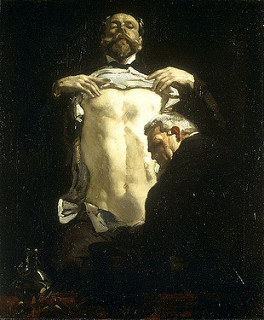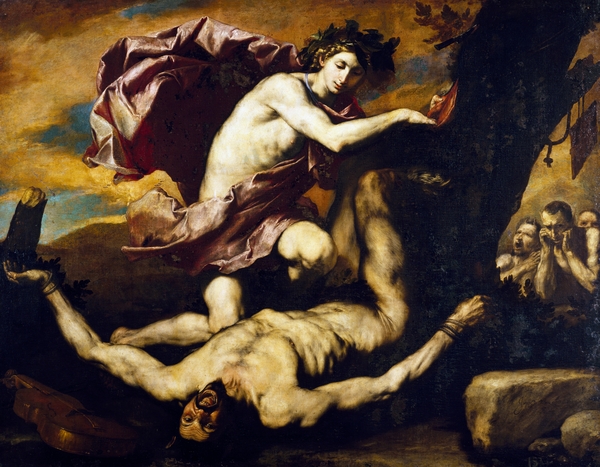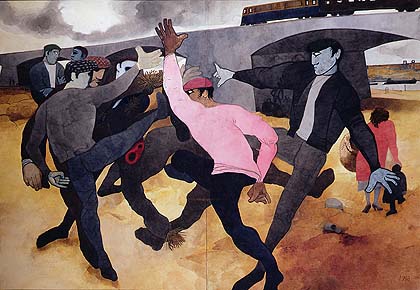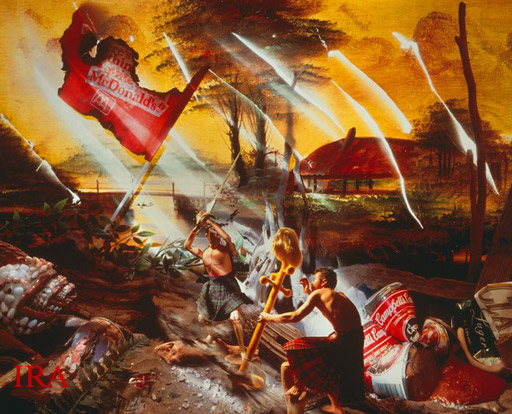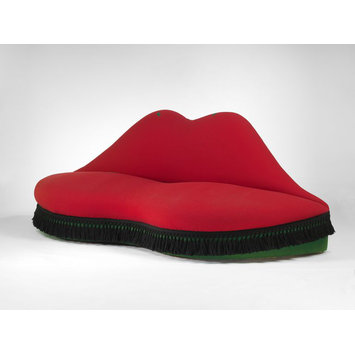The role and miraculous agency of images A844 Ex. 1.4 & 1.4.1
The required reading for this
subsection is Robert Maniura, ‘Persuading the absent saint: image and
performance in Marian devotion’ (2009a). First read pp. 629–32,
which provides a primary source by Guizzelmi and the history of how the image
of the Virgin in Santa Maria delle Carceri in Prato came to be miraculous.
Consider the following questions:
·
What was the first miracle that the Virgin performed and what does this
say about how Renaissance viewers may have approached these images?
The Virgin was seen
by a boy to have ‘detached’ itself from the fresco on the disused prison wall
and entered the prison to clean it (631f.). The implication we could assume is
that images had the ability to summon or contained a real presence which could
be release from its two-dimensions and enabled to achieve ritual ends. The
cleaning of the prison is presumably about the consecration of the building (1684)
in its path to becoming a holy church. The picture remained miraculous in that
it exuded signs of the present body of Mary – bleeding, sweating, etc.
·
What other sorts of miracles did the Virgin/image perform?
Out of 94 in the collection surveyed, 10 involved
the collector, Guizzelmi, himself &
another 2 involve family members. Earlier stories involve earlier custodians of
the shrine. The role of ‘curation’ of the image then seems ritually tied to its
ritual potential including embodiment, intercession and co-involvement in its
own sacral ontology (633f.).
·
How is the image of the Virgin connected to Guizzelmi’s nephew’s
miraculous recovery from illness?
The serial relations of bodily contact (touch) that
appear to perform ritual connections between prototypical images (and their sacred
embodied original) and things used to substitute for and sometimes copy that
image, whether as wax or leaded figures or prints, that had themselves to be
touched to the prototype before their ritual power can be released in touching
the target of intervention. The power is a power of resurrection in small or
symbol (power over the moment of life and death). 629f.
·
How does Guizzelmi thank the Virgin for this recovery?
He fulfils his ritual promise by using 10 pounds of
new wax covered in silver to make an image of his nephew (once recovered) at
the weight he was when intercession was requested. To fulfil the last part he
ritually measure the nephew. The votive image was offered to Madonna (in
swaddling clothes like Christ). The hint of ritual ‘sacrifice’ is heavy (a
father gives his relative).
·
What role do images play in this account? And how many images are
actually being discussed?
Images are consecrated by themselves with the aid of
votives. There is the fresco image of Mary, the lead simulacrum, and the votive
wax effigy of the nephew-baby. Note intercession is asked for of the Great
Crucifix ‘of the Pieve of Prato’ before the Madonna of the Carcari is
approached. So let’s say 4. The account below says 3 since it omits the Great
Crucifix. I’ll stick by 4 since I think the sequence ‘sacrificed son’ to
mother offered substitute baby is
important.
FROM DISCUSSION TO CHECK MY ANSWERS
The first miracle performed by the image of the Virgin involved
her animation: she exited the painting and cleaned the prison. This signals an
image culture that believed in the ability of pictures to not only perform
miracles but also to become animated. The miracles that followed also continued
the tradition of her ability to come alive, as she wept, sweated blood and
opened her eyes, in addition to performing healing miracles.
Guizzelmi’s
nephew was cured by having a lead figure of the Virgin (a copy of the painting)
applied to his flesh. In thanksgiving for the cure, Guizzellmi promised to have
a portrait of the child made in wax and covered in silver, and then placed it
(swaddled in clothes) in the church in front of the image of the Virgin.
There
are three images mentioned here: the original cult image of the Virgin, the
lead Madonna of the Virgin touched to
the cult fresco Mary and the votive wax portrait of the child, which was gifted
to the cult fresco image – these will be further discussed in the next
exercise.
In this exercise
continue reading the rest of Robert Maniura, ‘Persuading the absent saint: image and
performance in Marian devotion; you are only required to read pp.
629–42 (read until ‘... history of ideas’), and pp. 644–51 (start again at ‘The
stories in Guizzelmi’s collections ...’ on p. 644).
· Pay attention to the
multiple images of the Virgin of Santa Maria delle Carceri: consider their
medium, their connection to the cult image and their efficacy in performing
miracles.
The Virgin delle Carceri is a figure from a painted fresco, whilst the
small amulet is am existent lead figure consecrated by being touched to the
painted image. The votive image is of wax covered with silver (expensive). The
link to the cult image is one of consecration by image to the lead figure on ritual
touch. The votive image is given to the painted image as a ritual of devotion
to the Madonna and gratitude for use of her benevolent power.
· Also keep in mind the
public nature of these images.
They are public in that they are part
of a means of publicly celebrating the power of the image – both recognising it
before the public and demonstrating it by embellishing the display with votives
known to come from their giver.
· How are they being
viewed and circulated?
Not by written publicity since the book
record is relatively private (634). Tokens that have received by touch the
power of the icon are worn on the person, on clothing or as jewellery (635).
They adorn the body but also dedicate the body to the image and memory of its
prototype. Prints are another type (637) and illustrate the issue of need for similitude
between consecrated thing and its protype. Note in both cases a physical object
is required (638) that can receive touches and impress them. Relics like the
Marian girdle could having received power by being worn on Mary’s real body,
could transmit this power to their physical objects that touch the believer
(640f). The image takes part in a dramatic performance (644) – ritual (645). The
similitude is needed because it is a prop in a drama. What is being copied is
the ritual of approach to the holy one not the object representing that holy
one (648f.). The ritual was that which cemented community identity.
· What is the
relationship between the cult image and its copies?
It is discussed 640ff. It is a mistake to see the
relationship of one of identity. It is about the need for ritual substitution
to distribute the power of the image (and ultimately its embodied prototype) across
the community or public it serves. The issue is not about naïve belief in the
agency of copies but willing suspension of disbelief, while still not
believing, at the moment in which the copy plays its role in a ritual. We know
the performance constituting the ritual is ‘unreal’ but know that it aspires to
the real just as much as do we as we reach out to test it. Important section on
p. 648: ‘inherent’ multiplicity of images because its role is to make
multiplicity and division into oneness with an ideal – community (649) _>
mimetic rituals.
Discussion from course
Maniura demonstrates that these multiple images – badges and
prints – of the Virgin often performed miracles themselves, particularly for
those who were too infirm to travel to the miraculous image itself. A
particularly instructive example is the story of Mona Lisabetta (p. 637), whose
cure is mediated by the woodcut print of the Virgin. Guizzelmi makes reference
to these prints as being numerous and notes that he bought many in Florence,
not in Prato; their production and circulation thus occurred beyond the
original cult site (p. 638). These prints, even though they were reproduced in
multiples, could perform miracles through ‘chains of touch’ (p. 639).
This
raises issues around the relationship between copies and originals in this time
period, and also alludes to the varied functions prints could serve, an issue
we will come back to in 1.7. You may have also noted that the image dates from
the fourteenth century and is by an unidentified artist – its fame is thus not
linked to its author (the artist) but rather to its miracle-working powers.
Consider
also the ways that images acted as surrogates, for instance, in the case of the
wax image (standing in for the nephew), which was offered as a votive gift to
the Virgin. Having understood the notion of publics, you might think about how
the Madonna del Prato produced a specific form of public – the church as public
space – which was not only a religious space, but one that was civic, social
and cultural. In addition, the various copies that circulated of the image,
from the lead replicas to the prints, allowed for a broader public. It
connected, for instance, Mona Lisabetta, who could not physically go to see the
Madonna but who had access to her through the copy.
